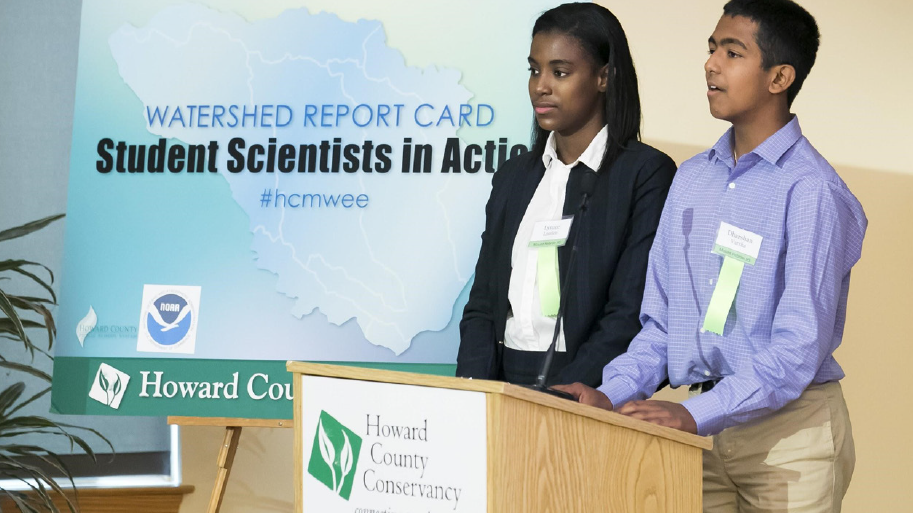Advocate for Change

Student action can take the form of advocacy where they are supporting or recommending a change, cause, or policy. This is often called civic engagement and involves “promoting the quality of life in a community, through both political and non-political processes.” Community can be defined at a variety of levels. Students can speak with their principal to make changes to their school, the school board for district-wide policies, the town council, or engage with state-wide or federal representatives.
Environmental education (EE) and investigating environmental issues goes hand-in-hand with civic engagement. A review of studies showed EE increases civic interest and engagement, and helps students feel empowered and able to take action. Some studies even found that EE can instill a “motivation to address community and environmental issues.”
Advocacy can be a powerful tool to respond to the variety of issues impacting the Mid-Atlantic region. The long-term success of the effort to protect and conserve the region and engage the communities and individuals that reside within, relies on inspiring and supporting youth to become environmental stewards and future leaders.
Connecting to Issue Investigation
Any environmental issue investigation can lead to advocacy or civic engagement. Students can respond to what they learn during their investigations by volunteering, taking part in service-learning projects, educating others to support a new or updated policy, or share their support and/or recommendations in many other forms.
For those working towards green school awards, this action can help advance environmental and sustainability education by allowing students to see how their actions can make an impact.
Facilitating Student Action
Students should continue to have opportunities to share ideas and opinions throughout the process of identifying, planning, and implementing action. Listed here are just a few ways students can stay engaged while working on this solution—but there are many more! The complexity of each activity/task can be adjusted for each grade level.
Educate - students can educate others on the results of their investigation to garner support in a change, cause, or policy. Depending on the age of students, this can take many forms from pamphlets, letters, skits, signs, presentations, and posters.
Advocate - students can advocate for solutions to an environmental issue by writing letters or presenting to the school board or various levels of government to ask for changes to related policies or community practices.
Monitor - students can monitor the environmental issue. Initial data can be used to inform their actions and to educate others. If change occurs, monitoring can show how well those changes are working.
Share and Celebrate - students can celebrate their work by sharing their results and/or concerns with the broader school community by writing articles, press releases or inviting reporters from the school paper and local news agencies.
Advocate for Change Resources
The Civic Action Project Toolkit guides students through a step-by-step process for civic action.
Earth Force has a variety of resources and trainings that can help you incorporate civic engagement into your classroom. Attending an Earth Force training will give you access to all their resources meant to help students engage with government or community organizations and people. For now, check out these sample Tip Cards from Earth Force: Identifying Stakeholders & Beginning Questions and Preparing for Meetings with Decision-makers.
Examples are always inspiring! Check out some quick examples from around the country or this story of middle school students in Virginia who identified an environmental issue (mold in their classroom) and they eventually took it all the way to the state government where a bill was signed into law!
